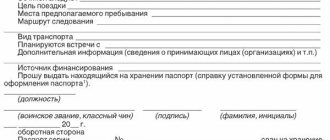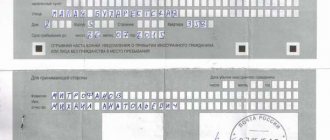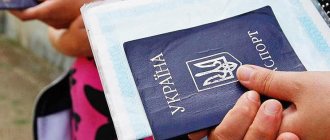- Basic rules of visa-free regime with EU countries
- Length of stay in EU countries
- What documents are needed to enter the EU countries?
- Biometric passport, old-style passport and ID card How to get a foreign passport with a chip (biometric)?
- International passport for children
- How to get an ID card?
- Information for residents of Crimea, Donetsk and Lugansk regions
Celebrations on the occasion of the signing of the decision on a visa-free procedure for crossing the border of the European Union naturally gave way to practical steps that Ukrainian citizens are taking to obtain a new type of international passport, find out the conditions for crossing the border and the list of necessary documents. Considering that the volume of incoming questions is only increasing, we have collected the most relevant and frequently asked questions in this article.
In this article, you will learn which countries are allowed to enter without visas, what you need to have with you when traveling to EU countries, and how to obtain a biometric passport to travel abroad. Here you will find a list of the most common reasons why border crossing may be refused, as well as information that will be of interest to residents of Crimea, Donetsk and Lugansk regions on visa-free issues.
Basic rules of visa-free regime with EU countries
In short, the visa-free regime involves the abolition of the procedure for obtaining visas to the EU, subject to certain conditions being met by those entering. The list of countries that have opened their borders to Ukrainians includes: Austria, Belgium, Bulgaria, Greece, Denmark, Estonia, Iceland, Spain, Italy, Cyprus, Latvia, Lithuania, Liechtenstein, Luxembourg, Malta, the Netherlands, Norway, Poland, Portugal, Romania, Slovakia, Slovenia, Hungary, Finland, France, Croatia, Czech Republic, Switzerland, Sweden, Estonia.
In addition to those listed, the following states provided the right for visa-free entry: Andorra, Monaco, San Marino and the Vatican.
Today, Ukraine has a visa-free regime with 119 countries. This significantly increased the value of the Ukrainian passport. It ranks 30th in the ranking, ahead of all post-Soviet states except the Baltic countries.
The introduction of a visa-free regime with EU countries automatically liberalized entry rules for almost 30 more countries included in the white Schengen list. According to the head of the Ministry of Foreign Affairs, we can expect in the near future a visa-free regime with all countries members of the white Schengen list.
Visa-free travel with children
Under the visa-free regime, not only adults, but also children can travel to EU countries. However, in this case, their parents must issue them a biometric foreign passport, since, regardless of age, everyone entering the territory of another country must have this type of document.
Under this travel regime, minor citizens of Ukraine cannot leave the state based on their parents’ documents.
In addition, a child under 16 years of age can travel abroad both under a visa and visa-free regime only in the following cases:
- accompanied by mother and father;
- accompanied by one of the parents with the consent of the other parent (the document must be written and certified by a notary);
- accompanied by any adult with a written and certified power of attorney from the parents.
Upon reaching the age of 16, teenagers can travel independently and receive equal rights to visa-free entry into the country as adults. Thus, Ukrainians can freely visit dozens of countries in Europe, Asia, America, Africa and Australia, both with and without children, without obtaining a visa.
Length of stay in EU countries
Visa-free rules for EU countries determine the possibility of Ukrainian citizens crossing the border and staying there for up to 90 days. Staying in the EU countries does not imply employment, even if it is temporary or seasonal. In addition to the duration of stay in the EU, the period of use of the visa-free regime for Ukrainians is limited to 180 days. In other words, 90 days within a 180-day period.

If you want to clarify information about the time of stay in the EU, you can use the “Schengen calculator” by following the link https://ec.europa.eu/assets/home/visa-calculator/calculator.htm. Using the calculator is quite simple: you just need to enter your passport information to get the exact number of days allowed to stay in the Schengen area.
The visa-free regime does not apply to those citizens who travel abroad to find work. For these purposes, you should apply for a “work” visa, as was the case before. At the same time, the time spent in the EU on a national visa does not count towards the visa-free stay limit. This means that if the visa expires, as well as if you have a new passport (biometric), you can use the 180/90 visa-free rule.
Many incoming questions are related to employment and visa-free travel. You should know for sure that visa-free travel is not allowed for employment abroad. However, there is some peculiarity - the visa-free regime prohibits employment with payment in cash. If a Ukrainian citizen crosses the EU border to work as a volunteer (that is, without pay), such activity is permitted. The provision of food and housing is also not considered payment.
Citizens who cross the EU border as part of a work trip (business trip) do not belong to the category of persons engaged in labor activities in the EU countries. These persons can benefit from visa-free rules without the risk of breaking the law.
And to complete the information block about the length of stay in EU countries, it should be noted the importance of complying with migration rules, since this is fraught with deportation and a subsequent ban on entry into EU countries.
Europe has introduced a light visa regime for Ukraine
On April 25, ambassadors of EU member states agreed to establish a European Travel Information and Authorization System, aimed at strengthening controls over citizens of third countries sharing a visa-free regime with the union. From now on, everyone wishing to visit the EU will have to fill out an electronic application and pay €7 for its processing. Personal information will be automatically checked against the EU and Interpol databases, and if there are no matches, the person will immediately receive permission to travel. If any suspicions or comments arise, specialists will additionally process the data manually within a maximum of 96 hours and issue a conclusion. This procedure will not need to be completed before each trip to Europe - the permit will be valid for three years or until the document expires. However, even if there is a positive response from European officials, a citizen of a country with a visa-free regime may not be allowed through by a border guard.
Average between visa and visa-free regimes
European officials have yet to develop a mechanism for the electronic system, so, according to available information, it will come into force no earlier than 2021. First of all, it will be implemented at airports and sea checkpoints, and then on international bus routes.
In an interview with Ukraina.ru, an expert at the Kiev Center for Political Research and Conflict Studies, Alexey Popov , noted that most Ukrainians cross the European border not by plane or ship, but by land transport.
“In fact, this is a light visa regime, but not a complete waiver of the visa regime, because it is a lower price, and a visit to a diplomatic mission is not required. However, this is some complication,” the political scientist said.
In his opinion, the decision to establish a European travel information and authorization system will not provoke a mass refusal of entry to citizens of visa-free countries by border guards, since this does not happen under the current visa-free system.
EU ultimatum: Six demands to maintain Ukrainian visa-free regime
©
RIA Novosti, Alexey Kudenko |
Go to photo bank For many Ukrainians, the simplification of border crossing procedures has opened up the opportunity to go to work in Europe, although the visa-free regime does not give the right to work.
By the beginning of the year, as journalist Ruslan Kotsaba reported, about 100 thousand people, that is, approximately 30% of the total number of those who left, exceeded the 90-day period of stay in EU states and did not return to their homeland. “If people go to the EU with a special permit and do not return, then Brussels will face the same problem in the migration sphere: it is very difficult to deport a person from Europe if he does not want to. Over the course of 15 years, there were various scandals, for example, they tried to deport a Nigerian woman from Belgium and put her on a plane, and she screamed, the police covered her mouth with a special pillow and ultimately strangled her. A scandal broke out, mass protests took place in Brussels, and the pillow was removed from the arsenal of special equipment of law enforcement agencies. If a person actively resists deportation—and besides, there is no strict police control on the streets—then he will be able to stay in Europe for quite a long time, violating migration rules,” Popov said.
Liberalization of the visa regime with Europe had a direct impact on changes in labor migration flows from Ukraine. In recent years, the share of those who went to work in Russia has decreased, while in Poland, on the contrary, it has increased. In 2021, 87% of residence permits and 95% of work permits were issued to Ukrainians by Warsaw. Moreover, people from the neighboring country ranked seventh in terms of the number of passports obtained in the states of the European Union. A little more than 24 thousand Ukrainians became “new Europeans”, mainly Germans, Romanians and Portuguese.
Visa-free is everything
A visa-free regime for Ukraine means much more than the opportunity not to submit packages of documents for a trip to Europe to diplomatic missions. Ukrainian officials are trying to cover up all failures in internal affairs with statements about successes in the external arena, primarily by concluding an association agreement with the EU and obtaining a visa-free regime, to which the country has been working for 11 long years.
Viktor Yushchenko, was at the origins of this process . At the EU-Ukraine summit in 2006, the parties initialed the Agreement on Readmission (the forced return of migrants who entered the EU illegally from Ukraine), and signed it in 2007. During Yushchenko's reign, Brussels simplified the procedure for obtaining visas for certain categories of the Ukrainian population. His successor, Viktor Yanukovych, managed to obtain an action plan for the introduction of a visa-free regime, consisting of 60 points and obliging Kiev to review legislation in 15 areas and develop seven national strategies. However, the realization of the “European dream” was interfered with by a coup d’état, provoked by the president’s decision to postpone the signing of the association agreement. Petro Poroshenko, who came to power on the wave of mass protests, zealously set about Westernizing the country and signed the political and economic parts of the Association Agreement with the European Union within three months of each other. The head of state has repeatedly made forecasts regarding the start of the cherished visa-free regime, naming certain dates, but they passed, and the need for a visa remained. Everything changed on June 11, 2021: citizens of Ukraine received the right to freely enter Europe if they have a new type of international passport.
Negotiations lasting 11 years: Ukraine’s path to visa-free travel
©
RIA Novosti, Alexey Kudenko | Go to photobank
According to Popov, visa-free travel is one of the few factors of Ukraine’s success during the period of Poroshenko’s rule. For ordinary Ukrainians, this regime remains the main benefit of the country’s rapprochement with the EU, while for the majority this benefit is theoretical, since they do not have the financial opportunity to travel abroad.
“Many citizens still took advantage of the visa-free regime and, thanks to it, found employment, in particular in Poland. Among this category there may be people who are more favorable to the president than those living inside Ukraine, but they will be extremely inactive in voting, because this requires registering with the consulate. The number of registered ones is much less than the actual number in the country. The actual turnout at foreign polling stations is always low. I admit that the presidential team may make some changes to the voting address for citizens abroad. However, such actions will still slightly increase foreign turnout, because to vote in another country you need to sacrifice your personal time,” the political scientist said.
North American Solidarity
In addition to the news about the introduction of a special permit system for travel to Europe, Ukrainians were informed of the need to provide an electronic photo and fingerprints when applying for a tourist visa, work permit, study permit and permanent residence in Canada. This data will need to be submitted once every 10 years. Taking into account the processing fee for this data, the cost of the visa will increase from 100 to 185 Canadian dollars.
“This is the general policy regarding migration on the North American continent. Washington is tightening its migration policy, and Ottawa is following it, because the Canada-US border is quite transparent; a person who ends up in Canada can simply enter the United States. I don’t think that this is directly related to Ukraine, because the migration flow of Ukrainians to Canada is much lower than to Europe,” Popov explained.
Gazeta.ua: Why do Europe need Ukrainians?
©
Embassy of Ukraine in the USA
Despite Kyiv's political support, European officials are nevertheless extremely cautious and are in no rush to achieve a comprehensive rapprochement. Before saying the final yes to the visa-free regime with Ukraine, Brussels developed a mechanism for promptly suspending its operation, for example, in the event of a mass entry of persons who are trying to illegally emigrate or work in EU countries, as well as a significant increase in unfounded asylum applications or an increase in the risk to public law and order or national security of EU countries.
In addition, the text of the Agreement on the provision of a visa-free regime stipulates the obligation of the European Commission to report annually to the European Parliament and the Council of the EU on how Kyiv fulfills its obligations until 2024. If experts determine that even one principle has been violated, then the leadership of the European Union is obliged to launch a procedure for suspending visa-free travel.
What documents are needed to enter the EU countries?
So, what you need to have when traveling to the countries of the European Union:
- International passport (biometric) or old-style passport for traveling abroad + national visa.
- Confirmation of the purpose of your stay (this could be an invitation or ticket to a concert, festival, etc.).
- Sufficient amount of funds for living for the entire period (cash or non-cash).
- A return ticket or sufficient funds to purchase a return ticket. As a rule, return ticket requirements are not imposed on participants of business trips, since such trips are not always regulated by any specific period.
- When crossing the EU border, motorists must provide a Green Card policy, which provides civil liability insurance for the car owner abroad.
Medical travel insurance (may or may not be required, but it doesn't hurt to have it). Its cost is not so high, but you can avoid possible misunderstandings with border guards and have insurance coverage in case of illness or accident.
You can prove the presence of the required amount of money on a bank card by simply showing it to the border guard, or by printing a receipt from an ATM about the balance on this bank card. In practice, the solvency check is rather conditional. The applicant will not be required to provide bank account statements or information on turnover for any period, as was required when applying for a visa.
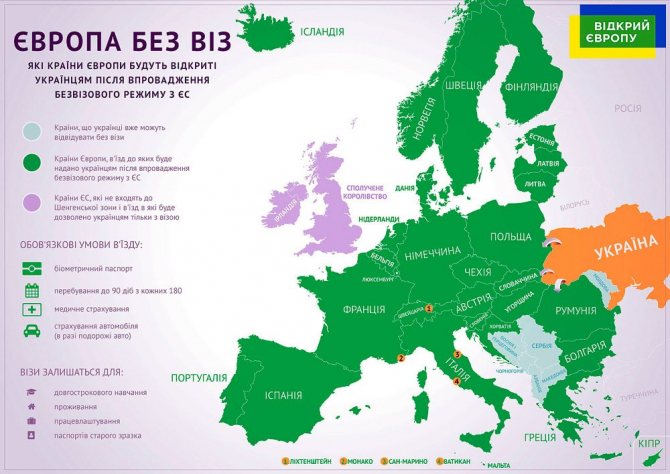
The rules for crossing the EU border are prescribed in the Schengen Border Code. It states, in particular, that border crossings should only be carried out at checkpoints, with a travel document and a visa (if required).
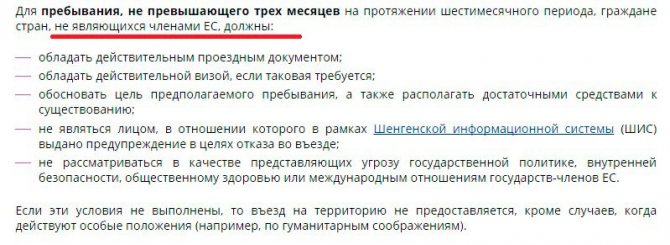
When crossing the EU border, the passport is marked by the border services. Practice shows that the more such marks in a passport, the more loyal border guards become to the person entering. Conversely, a clean passport attracts closer attention from border control.
It is also important to know that crossing the border with EU countries is possible not only from Ukraine, but also from any other country. That is, a Ukrainian living abroad can take advantage of a visa-free regime if he visits EU countries, choosing the point of entry at his own discretion.
Biometric passport, old-style passport and ID card
Before we talk about obtaining a biometric passport, you should define the terms:
- A biometric passport for traveling abroad is a document that allows you to take advantage of the visa-free regime with the EU. This document contains a chip with information about the holder of such a passport. The chip may not contain fingerprint data (for various reasons), which is not a reason for refusal of entry into the EU.
- The old-style passport for traveling abroad does not contain a chip and is used when traveling abroad simultaneously with a national visa. You will not be able to obtain a visa by presenting a passport with a chip (biometric). A passport without a chip (if you have a passport with a chip) can be used at your own discretion until its expiration date. For example, traveling abroad with a valid visa.
- An ID card is an internal document that is an analogue of an internal passport of a citizen of Ukraine and has the same features and properties.
How to obtain a passport with a chip (biometric)?
You can apply for a biometric international passport (with a chip) at regional branches of the State Migration Service of Ukraine or at specialized service centers. When you first apply for a foreign passport (meaning that the applicant did not previously have such a document), you should apply at the place of regional registration. A list of branches with addresses and telephone numbers is posted on the State Migration Service website dmsu.gov.ua in the “Territorial Bodies” section. If the applicant lives abroad, then a passport can be issued (renewed) by contacting a diplomatic mission.
For registration you will need:
- Fill out the application form.
- Show your passport.
- Birth certificate for those under 14 years of age.
- Receipts for payment for the service.
- Taxpayer identification number (TIN) for persons who are applying for a foreign passport for the first time.
When applying for a passport with a chip, you must undergo a fingerprint scanning procedure. This procedure applies to persons over 12 years of age.
In connection with many questions, you should be aware that for a number of reasons (moral, religious beliefs or physical defects) fingerprint scanning may not be carried out. The absence of scanned fingerprints will not affect the quality of the passport when crossing the EU border. Moreover, fingerprint information is inaccessible to border officials, according to experts and people familiar with the situation.
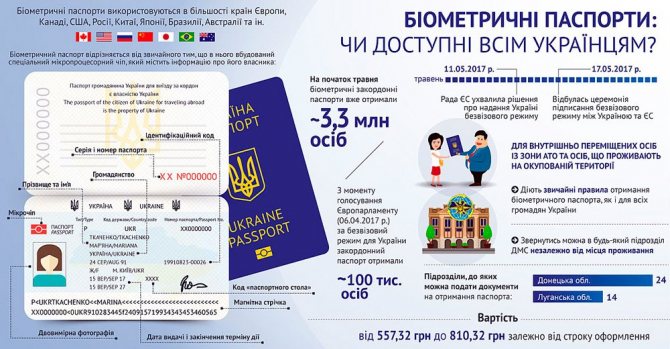
The cost of the service today is 557 UAH. 32 kopecks (253 UAH cost of administrative services and 304.32 UAH for a passport form). The processing time is 20 working days. For urgent registration, you will need to pay 810.32 UAH. (of which admin services are 506 UAH), and the production time will be 7 working days.
International passport for children
For children under 12 years of age, fingerprint scanning is not required when applying for a passport. Registration takes place on the basis of the birth certificate data.
Children over 14 years of age must have their fingerprints scanned and receive an ID card. The validity period of such “children’s” passports is 4 years. For persons over 16 years of age, a passport is issued for a period of 10 years.
And one more note on the topic of children traveling abroad. Until the age of 16, children must be accompanied by both parents or one parent with the notarized permission of the other. This rule applies when leaving Ukraine. This will not be required to enter the European Union. Therefore, you should worry about documentary support in advance.
How to get an ID card?
An ID card is an analogue of an internal passport of a citizen of Ukraine. Citizens of Ukraine who have reached the age of 14 have the right to receive it, as well as persons who replace their passport due to changes in personal data, loss, and also in case of its unsuitability for further use.
ID cards can be obtained by persons aged 25 and 45 years, who, according to the regulations, must paste photographs into a valid passport. In some departments of the State Migration Service (SMS), in order to intensify the replacement of old-style passports with ID cards, they insist on replacement, but this norm is not yet mandatory. An ID card, like a 1994 passport, are equal identification documents.
To get an ID card you need:
- Passport (internal) of a citizen of Ukraine.
- Documents on marriage/divorce, birth of children.
- Receipt for payment for the service.
- Photo 10x15 (1 piece).
A more complete list of documents is presented on the official website of the State Migration Service in the corresponding section.
Information for residents of Crimea, Donetsk and Lugansk regions
For residents of Crimea, Donetsk and Lugansk regions, the same rules apply to obtaining international passports as throughout the entire territory of Ukraine. The main condition is the presence of an internal passport of a citizen of Ukraine and the absence of citizenship of another state. However, a representative of the state enterprise “Document”, commenting on the situation, noted the need for special verification and additional confirmation of the applicant’s identity. According to him, if a passport of a citizen of Ukraine, an INN, or an old-style international passport are presented, then residents of Donbass or Crimea will be asked to provide some additional document. This could be a driver's license, birth certificate, or any other document that can be used for personal identification.
Based on these documents, a biometric passport will be issued, giving the right to visa-free border crossing. Earlier, the media reported on the initiative of the President of Ukraine to issue old-style international passports to residents of the temporarily occupied territories. But this proposal was received ambiguously in the European Union, since such a measure goes against the principles of equality and the development of humanitarian ties of all Ukrainians without exception.
Visa for children

Obtaining a visa for a child is not much more difficult than for an adult. To do this, you only need some additional documents.
Registration of a child under 14 years of age
Children under 14 years of age do not need to undergo an interview at the consulate on their own. The only exceptions are participants in the school exchange program. For registration, you need a standard list of papers, but instead of a passport - a birth certificate and identity cards of both parents or guardians.
Among other things, you need to obtain a notarized permission for the child to leave the country from both parents.
If one of the parents has died, you need to take with you a death certificate or a court decision in case of deprivation of parental rights.
Children under 16 years old
Children from 14 to 16 years old inclusive need to undergo an interview, but they must be accompanied by parents or legal guardians. When one of the parents cannot be present, permission is required from him to take the child to the States. If a child has only one parent, confirmation of the death of the second or a court order to deprive parental rights is required.

Changes regarding receiving ID cards
According to the government decision, from November 1, 2021, citizens of our country can exchange old booklet passports for new plastic ID cards. This is done at your own request at any time in the “Administrative Services Centers”.
Let us recall that passports in the form of ID cards began to be issued in 2016, but subject to certain circumstances:
- If you lose your passport;
- Upon reaching 14 years of age.
Now, to replace it with a new document, you will need to write a special application and pay an administrative fee equal to 279 hryvnia. Also, everyone will need to worry in advance about obtaining a certificate from the place of registration (registration), as well as prepare certificates of marriage, birth of children, etc. After submitting all documents, your ID card will be ready in 20 working days.
Required amount of funds to visit EU countries
The table provides information on the minimum amount of funds that you need to have with you when crossing the border of some European Union countries.
| A country | Minimum amount of funds per day |
| Austria | There is no fixed amount, it is determined individually |
| Belgium | 45 euros for those staying with private individuals and 95 euros for staying at a hotel |
| Hungary | 3.2 euros |
| Germany | 45 euros |
| Greece | 50 euros for adults, 25 euros for minors. min 300 euros for stay up to 5 days |
| Denmark | 47 euros |
| Spain | 71 euros, min 637 euros regardless of length of stay |
| Italy | 269.60 euros per person for up to 5 days, less for groups of tourists |
| Latvia | 14 euros |
| Lithuania | 40 euros, 82 euros for minors, 167 euros for those applying for a residence permit |
| Liechtenstein | 91 euros, for students 27 euros |
| Luxembourg | determined individually |
| Malta | 48 euros |
| Netherlands | 34 euros |
| Norway | 54 euros |
| Poland | 27 euros for more than 3 days, 71 euros for up to 3 days |
| Portugal | 40 euros, carry min 75 euros |
| Slovakia | 56 euros |
| Slovenia | 70 euros, 35 euros for minors accompanied by parents |
| Finland | 30 euros, or on an individual basis |
| France | 32.50 euros with proof of accommodation, 65 euros - hotel, 120 euros without proof of accommodation |
| Czech | 42 euros for up to 30 days |
| Switzerland | 91 euros, for students 27 euros |
| Sweden | 47 euros |
| Estonia | 94 euros |
Registration deadlines
The standard processing time for a Schengen visa application takes 5-10 working days. In urgent situations, review of documents can be reduced to 3 days. If consulate employees doubt the reliability of the information provided by the applicant or the quality of the documents submitted, the decision-making period may be extended to 30 days.
Specialists of the consular department recommend that applicants submit documents for consideration in advance and when planning a trip, take into account the deadline for consideration of the application. The earliest deadline for submitting documents cannot exceed 90 days before the expected date of departure.
Reasons for refusal to cross the border with the EU
It was mentioned above what may become a reason for refusal to cross the border with the countries of the European Union. It is obvious that visa-free border crossing will be refused if the required list of documents is not available. For example, within a few days of the visa-free regime, several such cases became known. The reason, as strange as it may seem, was the lack of a biometric passport. That is, people tried to cross the border without a visa with their old-style international passports.
Another reason for the refusal is the inclusion in the sanctions lists of persons who were previously subject to deportation (expulsion) for violating migration rules or other rules of stay in the EU.
During the first day of the visa-free regime, about 2,000 Ukrainians crossed the state border with EU countries without presenting visas. 78% of this number crossed the border by car, the remaining 22% at air checkpoints. Of this number, only a few were unable to enter EU countries due to violation of migration rules and lack of a biometric passport.
Europe hospitably opened its doors for Ukrainians, allowing them to join European culture, way of life, learn something, and adopt something for themselves. Visa-free travel with the European Union provides excellent opportunities for tourism and cultural recreation for Ukrainians. Let's be worthy of it!


